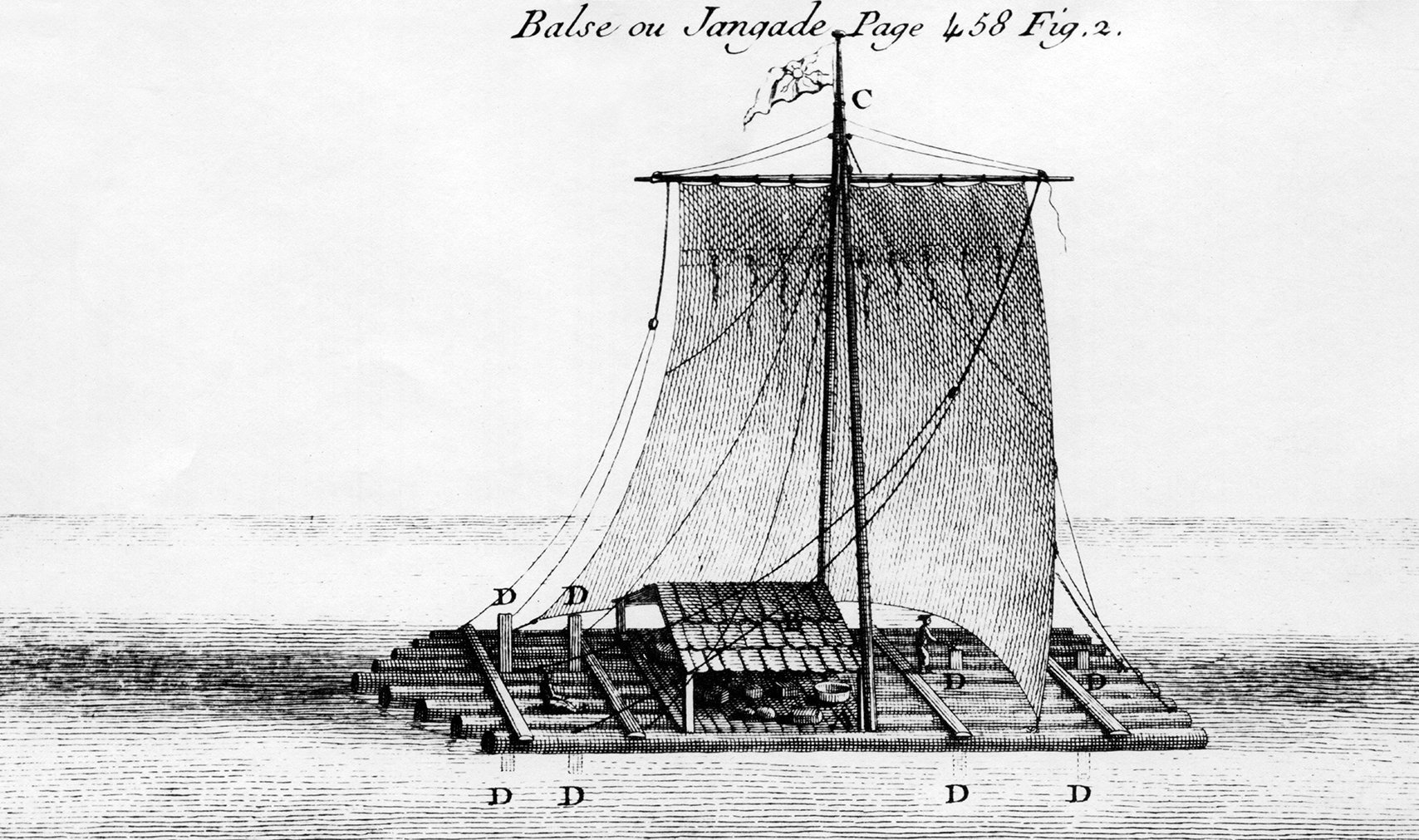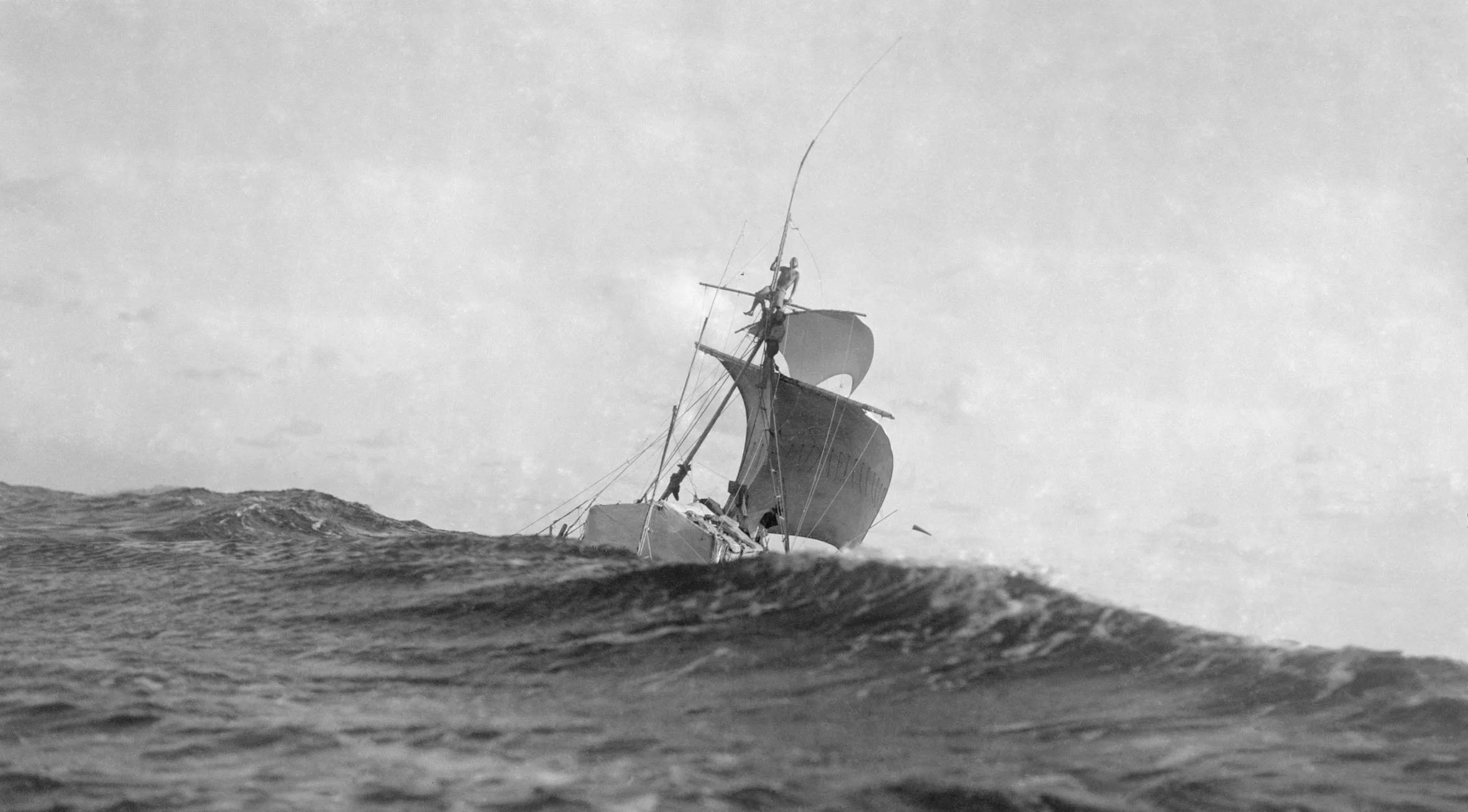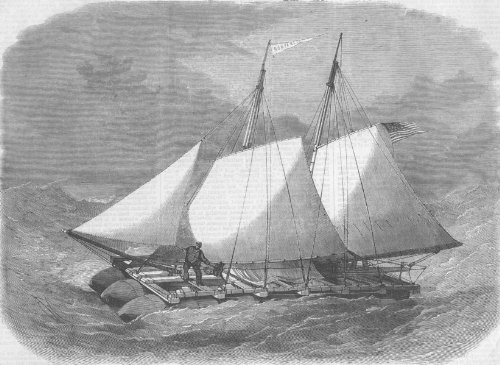Daring ocean crossings before Kon-Tiki
The Kon-Tiki voyage was hailed as the greatest maritime adventure of our time. But was Thor Heyerdahl the first to experiment with copies of old crafts? Or was he equally inspired by the adventurous travels of others?
The Kon-Tiki voyage was hailed as the greatest maritime adventure of our time
The small raft, built of logs and ropes of balsa wood, sailed a full 8,000 km from Peru to Raroia in French Polynesia, with five Norwegians and a Swede as crew. Their goal was to prove that primitive balsa wood rafts could cross the Pacific Ocean. Despite the prediction that the logs would act like a sponge, absorbing water and sinking after only 2 weeks at sea.
On Thursday, August 7, after a 101-day voyage, the ecstatic crew found their own private coral island. The Kon-Tiki Expedition. By Raft Across the South Seas (1950) became an international bestseller and the film won the Academy Award for Best Documentary in 1951. No wonder many were inspired to undertake their own voyages in the wake of Kon-Tiki. To date, 17 balsa rafts have emerged from the American continent and sailed into the Pacific Ocean. Everyone made it to the other side safely.
But was Thor Heyerdahl the first to experiment with copies of old crafts? Or was he equally inspired by the adventurous travels of others? The Kon-Tiki expedition was unique in its dedicated intent to investigate the seaworthiness of a vessel most believed would sink within two weeks as part of an anthropological theory of ancient migrations. But throughout history, daring ocean crossings have been accomplished. We would like to tell about four of these expeditions that may have inspired Thor Heyerdahl.
The Kon-Tiki raft 1947 (photo: KTM Archives).
Viking
Captain Magnus Anders in the stern of the Viking.
At a shipyard in Sandefjord, the neighboring town of Larvik where Thor Heyerdahl was born, there was hectic activity in the early summer of 1893. They were completing a copy of the Gokstad, the first Norwegian Viking ship unearthed in the area thirteen years earlier. The ship was named Viking.
It sailed from Oslo, up the Norwegian coast, before crossing over to the American mainland. After an adventurous journey, in which the large open ship was lifted clear by the waves, the crew arrived safely in Chicago. Their goal was the world exhibition in honor of Christopher Columbus. The voyage was an attempt by a proud people to show the world that America had received European visitors long before Columbus.
The Egg
The Egg by Ole Martin Bride
(Photo: GangeRolf, Wikimedia Commons).
The egg was the nickname for a hypermodern, safe and almost indestructible lifeboat, designed by Ole Martin Brude from Ålesund on the northwest coast of Norway in 1904. The small, egg-shaped boat was built from large galvanized steel sheets and completely enclosed. . It looked like a miniaturized version of a bulky U-boat, but with a keel and mast.
To market the concept, in 1904 Brude set sail in his futuristic-looking vessel from Ålesund, across the Atlantic Ocean, to Newfoundland. The destination was the World's Fair in St. Louis, Missouri, but the boat ran aground before reaching Boston and the voyage was aborted. Although the lifeboat worked well, it was never a success and was never put into production.
The egg on the inside (Photo: Andreas Vartdal, WikimediaCommons).
Non Pareil
On July 25, 1867, three Americans docked in Southampton, England, aboard a magnificent raft. They were the first to sail a rubber raft across the Atlantic. The ship was christened Non Pareil or No Comparison and had sailed from New York just 43 days earlier.
Contemporary drawing of Non Pareil at sea (KTM Archives).
The small raft was composed of three cigar-shaped rubber cylinders, 7 meters long. The pontoons were lashed to a wooden deck only 6.4 m long and 4 m wide. The cabin was made of a tent, much like on a Viking ship, where two could sleep while the third member of the crew was on watch. Non Pareil had two masts and a bowsprit. The crew brought a bellows to fill the pontoons with air and fresh water in two barrels. Apart from a 14-day storm, nothing happened on the voyage worth mentioning, according to the three adventurers.
Tilukum
The fourth expedition that may have inspired Thor Heyerdahl was named Tilikum. It was a great war canoe that John Voss bought used in 1901 from an aboriginal tribe on the northwest coast of Canada. Voss equipped it with modern sails and a cabin. In this canoe, John Voss and his crew first sailed across the Pacific Ocean to Australia. There they rounded the north coast of Australia, and sailed along the south coast of the Indonesian islands, into the Indian Ocean, before crossing the Indian Ocean to Durban in South Africa. In 1904 they reached London, where Voss was elected a member of the Royal Geographical Society.
The canoe Tilikum (Photographer: Uknown, WikimediaCommons).
Thor Heyerdahl's inspiration
Which of these expeditions was Thor Heyerdahl inspired by when he completed the Kon-Tiki expedition in 1947? He had probably heard of the voyage with Viking in 1893, but hardly the voyages with The Egg or Non Pareil. Perhaps he was seized by the adventure force of Captain Magnus Andersen from his hometown of Larvik, but in any case he didn't tell anyone.
Thor Heyerdahl learned of the journey to Tilikum while staying in Bella Coola, on the northwest coast of Canada, in the winter of 1939-40.
Both Viking and Tilikum represented for Heyerdahl the age of historic sailing ships. Although such journeys could very well be an adventure, they were common at the time. The seaworthiness and sailing characteristics of these boats were also well known before Andersen and Voss' lifting sieve.
Kon-Tiki was a different kind of adventure, where no one believed that these rafts would float for more than 14 days and that they could not sail on the open sea. Heyerdahl's crew tested the capabilities of a maritime vessel unknown to at least European sailors.
Thor Heyerdahl believed that the ancient cultural hero of the Andes, Con-Tiki Viracocha, had sailed the same route almost 1,500 years ago. That was why he believed so strongly that the balsa raft had to be seaworthy. His expedition was motivated by a legend.
Thor Heyerdahl experiments with balsa wood raft in Ecuador, 1953.









